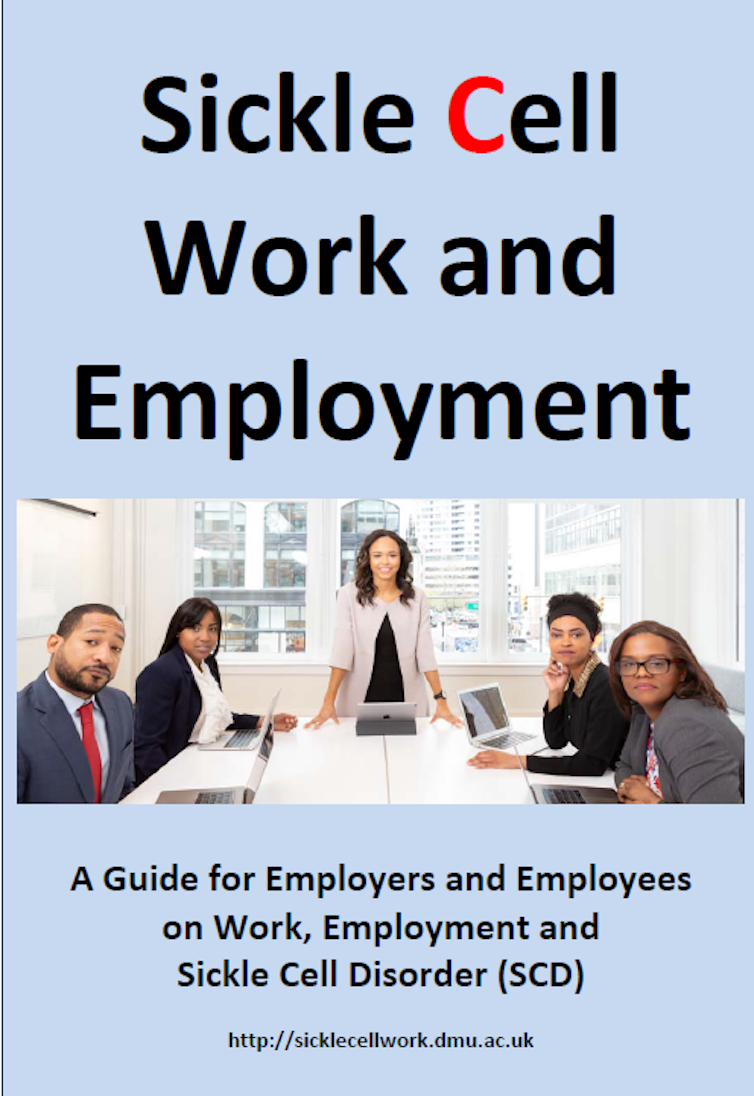In the United Kingdom, over 11 million people are living with a life-limiting condition, impairment or chronic illness. All of them are more likely than others to live in poverty, and face difficulties accessing education, employment and services.
In particular, disabled people experience a disability gap in employment, with only around 53% of British disabled people employed.
To combat this, in 2017, the UK government set an ambitious target of getting a million disabled people into employment. An important part of this plan was the “Disability Confident Scheme” which would involve employers committing to reasonable adjustments in the workplace, to ensure that a disabled person does not face any disadvantages. (The 2010 Equality Act says these adjustments are also important for diversity and equality.)
But not many employers are familiar with disability – much less chronic conditions or illnesses. They may also be worried about the costs of making necessary adjustments, and not agree on what is defined as “reasonable”.
Employees too may be wary of openly disclosing an illness, chronic condition or disability. They may not always know how their condition will develop or even see themselves as “disabled”.
To investigate the barriers (and solutions) to employment, the Disability Research on Independent Living & Learning programme helped fund a number of projects, one of which was led by people with the inherited chronic illness sickle cell disorder.
Sickle cell is the most common genetic condition in the UK with around 15,000 cases. People with sickle cell are usually of African-Caribbean, African, Middle Eastern, Indian, Latin-American or Mediterranean origin, because carrying the gene gave – and still gives – a person resistance against malaria. Globally, sickle cell affects millions of people.
Sickle cell is a complex condition associated with periodic episodes of excruciating pain. It is also a “variable” condition which means that while one person can have a mild version for most of their life, another person can have a version which is life threatening and disabling.
On top of this, many of the symptoms – which can be acerbated by dehydration, extremes in temperature and stressful environments – are invisible, such as chronic pain, fatigue, or organ damage.
Our project looked at the employment trajectories of adults living with sickle cell in the UK. The majority were, or had been, in paid employment – and many had experienced various forms of discrimination in both work and welfare.
Some of these were structural issues like racism and sexism. This is based on the fact that many men and women with sickle cell are also of African and African Caribbean origin in the UK. Such issues require policy changes to alter the power balance between employer and employees. But others, like disability discrimination, could be tackled more immediately.
The people we spoke to were confident that they could be valuable employees if given the right kind of support. They were used to managing their conditions, and suggested that simple and low-cost allowances would allow them to do their jobs well. These included having easy access to drinking water, regular toilet breaks, flexible working hours, and adequate heating.
A supportive working environment
To address some of these issues, our study participants developed a guide for employers and employees. They wanted a document that would explain their condition, clarify their legal situation, and identify how to ensure employers made reasonable adjustments.
Their recommendations were further developed and written up by the authors with collaboration from Kalpna Sokhal for the Sickle Cell Society, and Vanetta Morrison on behalf of the OSCAR Sandwell charity. This led to the publication of the Sickle Cell, Work and Employment Guide and an associated website.
An important part of the guide is a “Workers Individual Support Plan”, which can be used by various organisation departments. Having such a plan allows both employers and employees to discuss and document – confidentially – what reasonable adjustments are needed at work for the employee to do their job well.

The new guide. Author provided
This could involve extra support during busy times, or access to a private room to rest or take medications. Other allowances might be getting permission to wear warm clothes under a uniform or provision of a laptop to be able to work from home.
Having a support plan also means that a record is kept, which can be regularly revised to ensure no disadvantage in the event of ongoing changes in an employee’s condition.
And while the plan was devised for people with sickle cell, we hope that by publishing it under a creative commons licence, it could be of benefit to people with all kinds of physical and mental health conditions.
People are living longer with disabilities, illnesses and chronic conditions, and better support will be needed for these employees and their employers. An individual support plan, that could be easily adapted for disabilities, chronic illnesses, mental health conditions or even breastfeeding mothers, will help to ensure better health and wellbeing in the workplace for all.



 6 simple questions to tell if a ‘finfluencer’ is more flash than cash
6 simple questions to tell if a ‘finfluencer’ is more flash than cash  The Beauty Beneath the Expressway: A Journey from Self to Service
The Beauty Beneath the Expressway: A Journey from Self to Service  Stuck in a creativity slump at work? Here are some surprising ways to get your spark back
Stuck in a creativity slump at work? Here are some surprising ways to get your spark back  Why have so few atrocities ever been recognised as genocide?
Why have so few atrocities ever been recognised as genocide?  Every generation thinks they had it the toughest, but for Gen Z, they’re probably right
Every generation thinks they had it the toughest, but for Gen Z, they’re probably right  The ghost of Robodebt – Federal Court rules billions of dollars in welfare debts must be recalculated
The ghost of Robodebt – Federal Court rules billions of dollars in welfare debts must be recalculated  Disaster or digital spectacle? The dangers of using floods to create social media content
Disaster or digital spectacle? The dangers of using floods to create social media content  Why a ‘rip-off’ degree might be worth the money after all – research study
Why a ‘rip-off’ degree might be worth the money after all – research study  Columbia Student Mahmoud Khalil Fights Arrest as Deportation Case Moves to New Jersey
Columbia Student Mahmoud Khalil Fights Arrest as Deportation Case Moves to New Jersey  The American mass exodus to Canada amid Trump 2.0 has yet to materialize
The American mass exodus to Canada amid Trump 2.0 has yet to materialize 




























